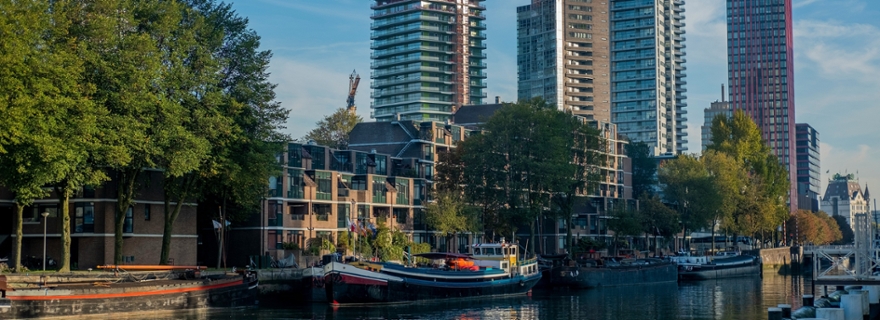
Building more in urban areas is, in most places in the Netherlands, the smartest way to tackle the housing crisis. This is evident from research conducted by Janneke van Oorschot, published in a partner journal of Nature. Remarkably, this does not have to come at the expense of green spaces in cities. In fact, we could even increase green space.
By 2050, the Netherlands will need nearly two million additional homes. However, housing and related utility buildings take up already limited space, and the materials required for construction also have an environmental footprint. With these challenges in mind, Van Oorschot sought to explore where and how best to build.
In her earlier research, Van Oorschot had already delved into construction materials for new buildings, with a focus on circular use. She also examined the availability of green spaces in urban environments and the 'services' these spaces provide, such as cooling and recreation.
Inside or outside the city?
'In this study, we combined all those elements,' says Van Oorschot, who is nearing the completion of her PhD. This research earned her a publication in npj Urban Sustainability, a partner journal of Nature. Other researchers from the Institute of Environmental Sciences also contributed.
Two scenarios from the Netherlands Environmental Assessment Agency (PBL) formed the basis of the research. These scenarios outline two versions of what the Netherlands could look like by 2050. 'The main question is whether population growth will occur inside or outside cities,' Van Oorschot explains. In her research, she refers to densely populated areas ('dense') and sparsely populated areas ('sparse').
Hundreds of small cells
By breaking down PBL's projections into hundreds of small cells, the researcher calculated how many materials are needed in each scenario to build the required homes, and what the impact of the housing will be on the immediate natural environment in each case.
Her conclusion is that further densifying already built-up urban areas is, in most cases, the most efficient in terms of both material and land use. This is because homes in cities tend to be smaller and more vertical construction is common. If demolished materials are reused during construction, the score for material efficiency improves even further.
More green means more cooling
One striking aspect of this 'densification scenario' is that the additional housing does not have to come at the cost of green spaces. 'On the contrary,' says Van Oorschot, 'it is possible to create even more green space than before.' This means: more cooling, better rainwater absorption, and more recreational areas. According to the research, up to 3% more green space could be added.
She gives the city centre of Leiden as an example. 'It is currently a red spot on the map when it comes to heat. But in the locations where more homes are being built, along with more green spaces, you see this heat spot clearing up by 2050 in the projections.'
A tool for policymakers
The research does not claim that building on undeveloped land, such as former agricultural areas, is necessarily a bad idea. However, it shows that material and land use are often higher. However, it shows that material and land usage are often higher, as there is less need for dense construction. This results in larger homes, such as single-family houses. One advantage is that there is usually more space for greenery.
Van Oorschot hopes her research can help policymakers in planning housing, utility buildings, and green spaces. Thanks to her research, they can now consider both space and material use, in combination with specific local circumstances. In the next phase, the researcher hopes to add more parameters to the model used, such as biodiversity and health impacts.






